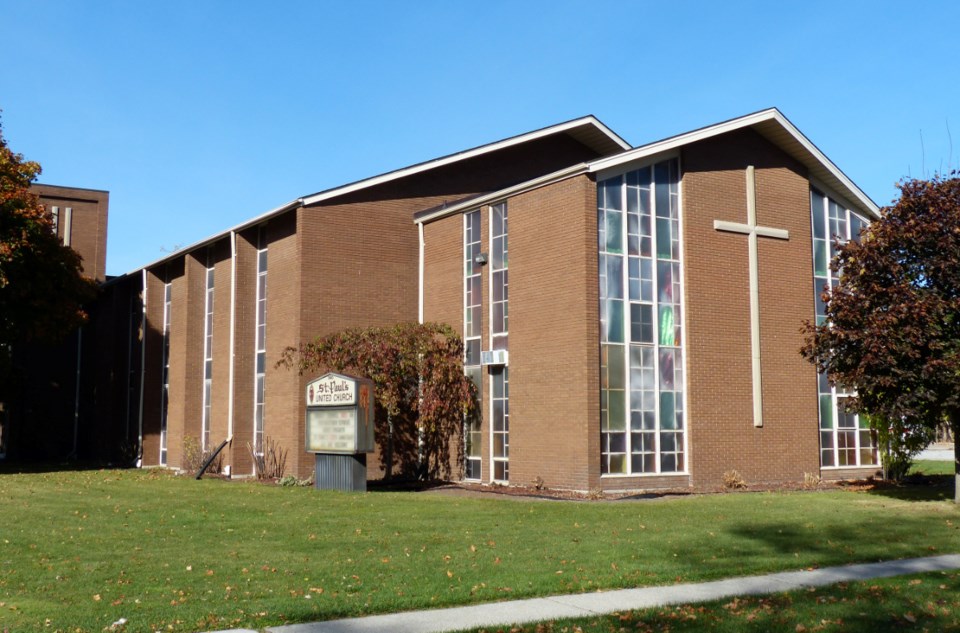Phil Egan
It is a victim of our times.
Aging congregations, declining church attendance and, most recently, fears of gathering during a global pandemic have combined to shutter churches across the region.
St. Paul’s United Church at the corner of Emma and Devine streets will join that list on Sunday, June 26.
A parish that was home to 1,500 congregants in the 1950s has dwindled to a few dozen.
But history-minded Sarnians will join the remaining parishioners in mourning the loss of this 132-year-old institution, which is deeply tied to the city’s unique past.
When Sarnia founder Malcolm Cameron arrived at The Rapids in 1833 he encouraged many of his fellow Scot Presbyterians to settle here from Scotland and from Lanark County. So strong was their influence that Sarnia narrowly escaped being named New Glasgow.
St. Paul’s began life in 1890 as the Albert Street Presbyterian Church. Located on what is today the southwest corner of Vidal and Confederation streets, it was a project of the St. Andrew’s mother church.
Sarnia’s fourth (south) ward was a hotbed of industrial activity with work underway on the St. Clair Tunnel. The Albert Street church served the religious needs of the workers and their families.
In 1903, newly christened as St. Paul’s Presbyterian Church, the congregation moved to its present site at Emma and Devine streets, where it grew and flourished.
Following the merger of the Methodist, Congregational and Presbyterian churches in 1925, the south end church became St. Paul’s United.
One celebrated church leader, later inducted into the Sarnia Sports Hall of Fame, was Stan O’Neal. From 1941 to 1966 O’Neal coached basketball and mentored young men from across the city in Christian values.
But an 11-year-old arsonist set St. Paul’s ablaze on Aug. 11, 1963. Though the building was destroyed, firefighters managed to save a 25-foot centre window containing three stained glass windows dedicated to two beloved former pastors. The salvaged window was incorporated into the new St. Paul’s, which was rebuilt in 1964.
One notable feature of St. Paul’s is the 100-yer-old Memorial Hall, with its ground floor gymnasium. It’s Sarnia’s only building constructed as a memorial to those who made the supreme sacrifice in the First World War.
Ian Mason, Curator of the Presbyterian Church Heritage Centre in Carlisle, North Middlesex, is also trying to find a new home for St. Paul’s 1965 Hallman pipe organ – the very first of 59 made by the Kitchener manufacturer between 1965 and 1969.
Ian’s mother Wilhhemine, whose maternal grandparents joined the Albert Street church in 1902, called the coming closure of St. Paul’s a “sad day.”
Local history buffs agree.
Phil Egan is editor-in-chief of the Sarnia Historical Society. Got an interesting tale? Contact him at [email protected]
